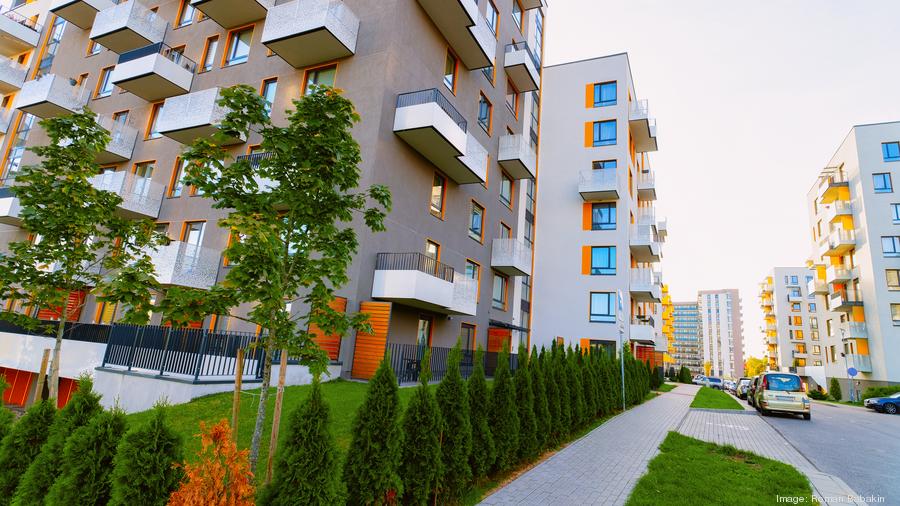As businesses and consumers grapple with soaring inflation on everything from groceries to gasoline, average rents are also at all-time highs.
That's according to an analysis by The Business Journals of second-quarter apartment rent data from RealPage Market Analytics, which found average rents are up 17% compared to a year ago and up 30% compared to 2018.
Average rents nationally in the second quarter were $1,736, which is up $251 from a year ago.
Mark Vitner, managing director and senior economist at Wells Fargo & Co., said a "perfect storm" of factors are pushing rents to all-time highs, including the strong job market, increased wages and higher demand for new apartments. The Sun Belt has been particularly affected.
Rents were even higher in the nation's 50 largest metro areas, where the average rent was $1,821 in the second quarter, up from $1,547 a year ago — an 18% jump.
Despite the year-over-year upticks, experts say some relief could be on the way, as signs point to a tapering of rent increases in late 2022 and 2023. But even if the pace of rent hikes moderates, most renters will find themselves paying significantly more than they did just a few years ago at a time when the price of nearly everything is also rising.
Sunshine State surges
Florida, which has seen a significant influx of residents since the start of the pandemic, dominated the list of the metros with the largest-year-over-year increases in rents.
Fort Lauderdale led the way. Average rent there increased 29% over the past year, to $2,345.
Orlando posted a 27% increase to $1,749, and Miami wasn't far behind, with a nearly 27% increase.
The major metro picture
At the height of the pandemic, many predicted workers would flee high-cost coastal markets like New York City in search of more affordable places to live.
While time will reveal the extent of that trend, data from RealPage shows it hasn't caused a short-term decline in rents in the Big Apple.
Average apartment rents increased 26% over the past year — an increase of $849 to $4,127.
Among the nation's other largest metro areas, Chicago (17.2%), Los Angeles (17%) and Boston (16.6%) all posted increases in line with the national year-over-year average, while renters in San Francisco (12.1%) and Washington, D.C. (11.6%) saw smaller increases.
Gateway markets like Chicago and New York saw the biggest declines in apartment rents nationally at the start of the pandemic, ground that has since been made up with big gains in rental rates.
Several of the largest metros in the nation do rank among the priciest markets for renters, with New York setting the pace.
Avoiding the surge
A few metros recorded more modest increases. Rents in Minneapolis-St. Paul rose just 7% year-over-year, rising an average of $100 to $1,470.
In New York, both Albany (9.5%) and Buffalo (10.8%) had increases well below the national average.
Rental rollback?
Some experts anticipate rent increases to moderate in the months and years to come.
Jeff Tucker, senior economist at Zillow Group Inc., believes the market has reached “peak annual rate of growth.”
That dovetails with past reporting from The National Observer Real Estate Editor Ashley Fahey, who reported the trajectory of growth was starting to level off.
"You're not getting the same trajectory of growth as you were seeing in the prime leasing months of 2021," Carl Whitaker, director of research and analytics at RealPage, told TNO Real Estate back in April. "It's fair to say the pace of growth has started to taper off a little bit. I think we’ve hit a point where we’ve basically peaked."
Additionally, Fahey reported more renters were choosing to renew their leases rather than find new places in a tightening market — in part because renters are likely to pay less to renew than if they moved to a new apartment in the same area.
Data from RealPage showed renters who renewed leases in April paid 10.7% more than their previous lease, while new renters paid 18.7% more.
Want more real estate news? Sign up here for The National Observer: Real Estate Edition.
